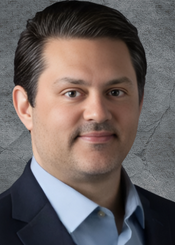Patient experience as a business strategy for rural hospitals
In rural health care, patient experience isn’t a luxury. It’s survival.
Yet hospital leaders juggle regulations, workforce shortages, and shrinking margins while trying to protect patient experience. They know it's not just a metric to track. It drives loyalty, market share, and financial stability.
In competitive markets, a hospital’s reputation directly affects its ability to attract and retain patients and staff. When commercially insured patients bypass the local hospital, the financial impact can be significant. In smaller communities, it can be the deciding factor between keeping patients local and losing them to larger systems.
For hospitals already operating on thin margins, that is a serious threat. This means patient experience is more than HCAHPS scores. It reflects how a hospital earns trust, strengthens community loyalty, and ensures long-term viability.
Why patient experience is a CEO-level issue
Patient experience isn’t limited to bedside manner. Every clinical and non-clinical encounter shapes how patients feel about the hospital and whether they trust it. That trust drives word of mouth, referrals, and reputation. It is built or broken one interaction at a time. Even clinically excellent hospitals can lose ground if patients leave feeling confused, dismissed, or like just another number. Unhappy patients don’t just leave quietly. They often take others with them.
But improving patient experience isn’t about adding more policies or programs. It starts with understanding human behavior and how patients perceive their care, not only by what services were delivered. This can turn patient experience into a strategic advantage instead of just another score to track.
Patient satisfaction is a business issue. CEOs don't need to be convinced of that. The real challenge is making it better without making the job harder.
The experience gap — and why it matters
Most hospital leaders are confident in their clinical quality, and rightly so. Their teams work hard to deliver safe, effective care under real-world pressures. But patients aren't only grading clinical performance. They are grading how they felt about it. Sometimes there is a mismatch between the care they received and the care they perceived.
This disconnect is where many hospitals lose patients they could have kept. Perceived experience is where a hospital’s reputation is made or lost.
What most patient experience efforts get wrong
Most hospitals want to improve, but too many fixes are superficial.
Patient experience is about more than nicer rooms or fancier food. Patients need to believe they matter to the people providing their care. But caring enough was never the issue — of course, your people care. What health care teams need is support that makes it easier to deliver great care, not harder.
Sometimes hospitals focus their patient experience efforts on clinical staff but overlook the impact of non-clinical interactions. A smooth registration process, clear communication from transport staff, and friendly service in the cafeteria all contribute to the impression of a hospital stay. In fact, these moments can be just as influential as medical care itself. When hospitals fail to recognize this, their efforts miss a critical piece of the patient experience.
Lastly, no patient experience strategy succeeds without staff buy-in. If frontline staff see the initiatives as unrealistic, they will not put them into practice. These projects fail because they don't reflect the challenges staff face during busy shifts. Many well-meaning training programs collapse because they simply ignore the realities of the job.
What high-performing hospitals do differently
Hospitals that get results focus on the details that shape how patients remember their care. Patient satisfaction data is treated with the same rigor as financial and clinical quality data. Leaders know it reflects culture, operations, and leadership.
The best strategies make shifts better for everyone. They provide practical tools staff can rely on during busy days of admissions, discharges, and worried families. When training helps staff communicate more clearly and manage patient concerns without adding extra burden, real change happens.
Above all, every initiative should be efficient, effective, and universal. Every staff member who interacts with patients should be trained on this and use it. This is not limited to doctors and nurses. It should also include secretaries, therapists, dietary staff, phlebotomists, aides, and others. By doing this, hospitals provide a consistent, positive experience from door to discharge.
What steps you can take
A strategic, hospital-wide approach should fit into workflows instead of disrupting them. Some people are naturally more outgoing, but the right strategies can help anyone communicate well. Without training, staff are left to figure it out on their own, relying on instincts that may not match the hospital’s goals. Small shifts can make a big difference.
- Equip staff with real-world communication tools. Give employees practical, research-backed techniques to de-escalate frustration, improve trust, and make patients feel heard without adding time to busy shifts.
- Train everyone who interacts with patients. A single interaction with a front desk staff member, phlebotomist, or dietary worker can shape how a patient perceives their care. Every department and every role needs the right tools.
- Ensure strategies are efficient and effective. If techniques don't work in real-world hospital settings, they won't stick. The best strategies are high-impact, easy to use, and fit seamlessly into daily workflows.
- Get staff buy-in. If frontline staff see training as impractical, they will not use it. Make sure your strategies feel relevant, realistic, and beneficial to staff, not just another item to check off.
- Make patient experience an ongoing conversation. Real improvement doesn't come from one-time training. Regularly evaluate what is working, adjust as needed, and keep the discussion going.
By applying behavioral science-driven, practical training across all roles, hospitals don't just improve scores. They create a culture where patient experience is a competitive advantage.
The bottom line for CEOs
For rural hospitals, patient experience is not just extra credit. Success depends on it.
When budgets are tight and specialty care is limited, reputation matters more than ever. Hospitals that focus on patient experience protect their future. Those that don’t will risk losing patients to competitors.
Focusing on patient experience is more than good care. It’s smart business.
NRHA adapted the above piece from Rural Physicians Group, a trusted NRHA partner, for publication within the Association’s Rural Health Voices blog.
 | About the author: With over 15 years of physician leadership experience, Dr. John Huff has founded two successful hospitalist programs in Kentucky. He is the hospitalist medical director at Baptist Health Hardin, where he has also served as chief of medicine, a utilization review physician advisor, and an active member of multiple committees. He has a passion for fostering a sustainable environment built on multidisciplinary teamwork, collegiality, and quality. |
 | About the author: A practicing hospitalist since 2012, Dr. David Yerkes has been instrumental in the development of the Baptist Hardin Hospitalist Program. Additionally, he is a Lt. Colonel in the US Army, having served two combat deployments overseas. He currently serves as a flight surgeon for the Army and fills multiple other leadership roles. As a local entrepreneur, he is the founder and owner of three businesses. He incorporates the lessons learned from these broad experiences to mold his approach to leadership. |
